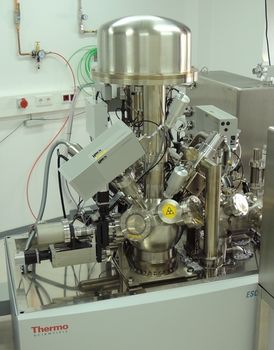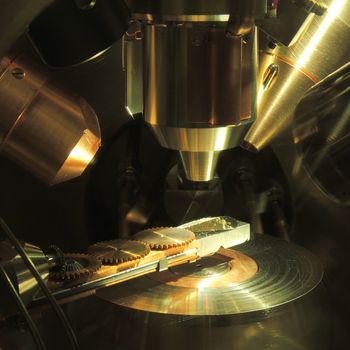XPS Facility
Electrochemistry and Condensed Matter Interfaces - Wittstock Group
Access
The XP spectrometer can be used on request by all groups of the university and also by external users, according to the Terms of Use. If you are interested, please contact:
Dr. Carsten Dosche
Tel.: 0441-7983975
Email: carsten.dosche{at}uni-oldenburg.de
Instrumental Details
Setup specifications:
System: ESCALAB 250 Xi (Thermo Fisher)
X-ray source: Al (monochromatic) or Mg/Al
Analysator and detector: hemispherical, channeltron
Minimum FWHM: 0.58 eV (Ag 3d5/2)
Minum spot size: 20 µm
Sample temperature: controlled 100-1000 K
Options:
Gas analysis with quadrupole MS
UPS-source for He I and He II
Ar sputter gun for Ar+ and Ar cluster ions
XPS-imaging (resolution 2 µm)
Electron source for REELS
Automatic charge compensation
Two gloveboxes are attached to the vacuum system for preparation of samples using organic and aqueous solutions followed by an inert transfer.
Method
For XPS measurements, the sample is irradiated with X-rayscausing the emission of electrons by the external photoeffect. The photelectrons are analyzed according to their kinetic energy and provide detailed qualitative and quantitative information about the elements present in the sample and, for high resolution spectra, also about the chemical state of these elements. Because electrons can travel in a solid sample only a few nanometers without losing energy during scattering processes, the analyzed electrons originate from a very thin surface layer of the sample. Thus, the obtained information is surface-sensitive.
Our setup is suitable for fast measurements with excellent signal-to noise (S/N) ratio as well as for high resolution measurements with full width at half maximum (FWHM) down to 0.6 eV (for Ag 3d5/2 line). The high S/N ratio is essential for the measurement of delicate samples and allows short measurement times that limits the X-ray dosage and thus prevents raditation-induced alteration of the chemical state. In addition to XPS, several other experimental options are possible, e.g., ultraviolett photoelectron spectroscopy (UPS), ion-scattering spectroscopy (ISS) and reflection electron energy loss spectroscopy (REELS).





